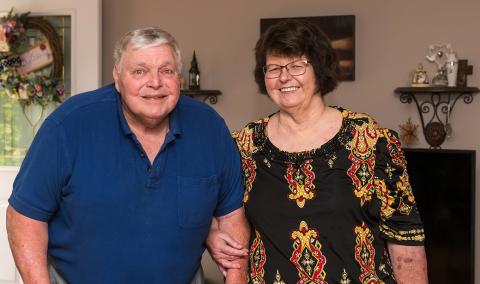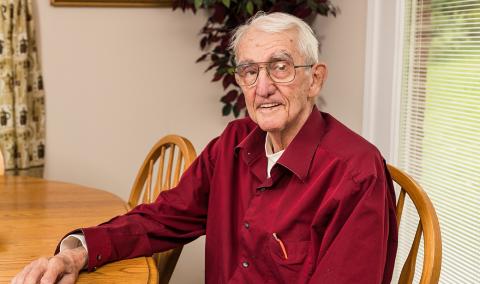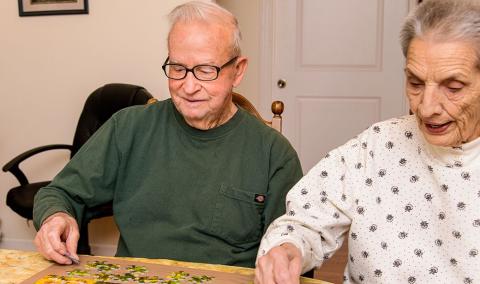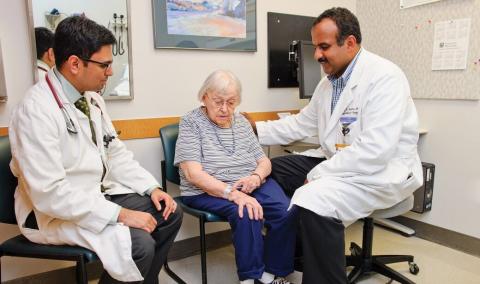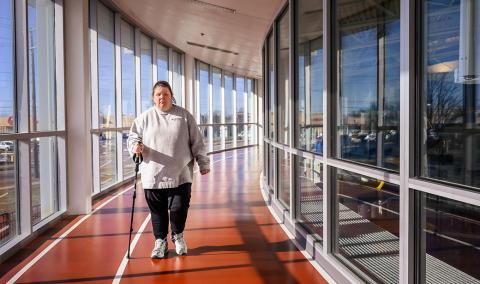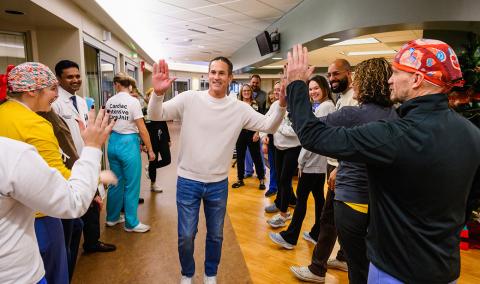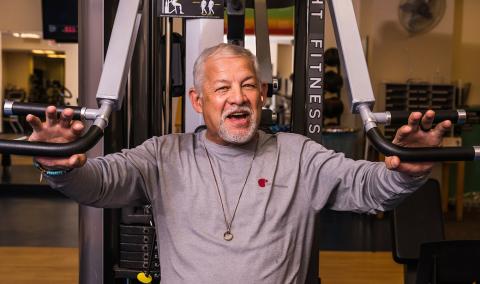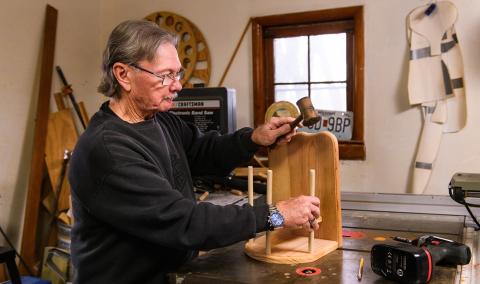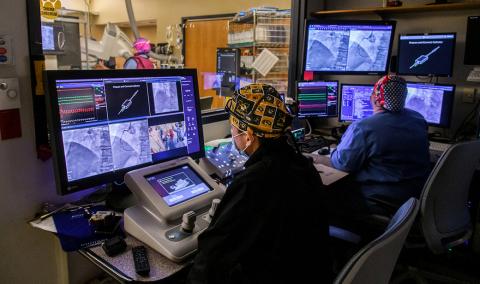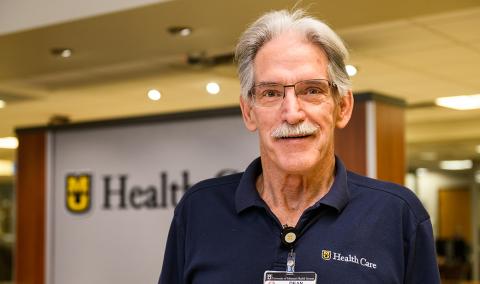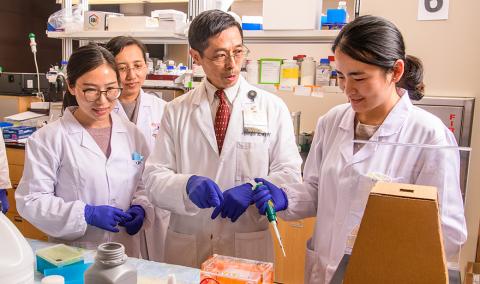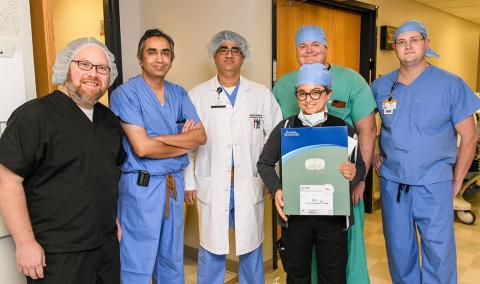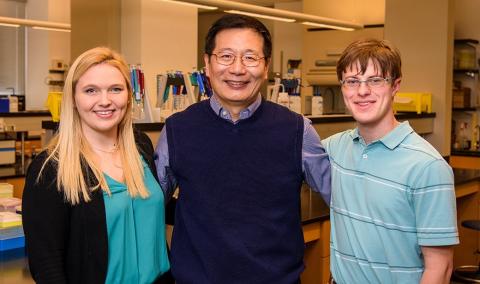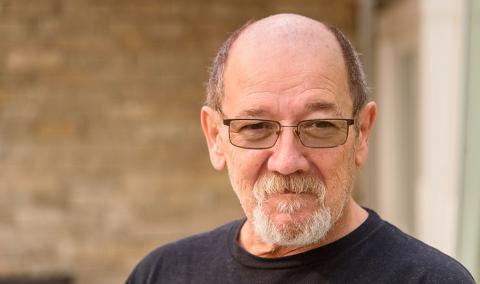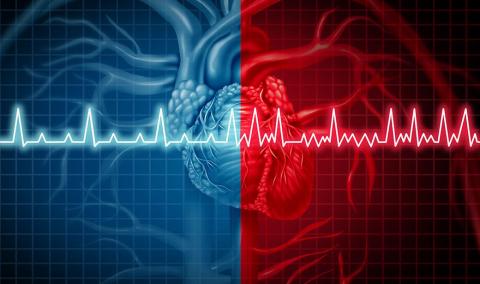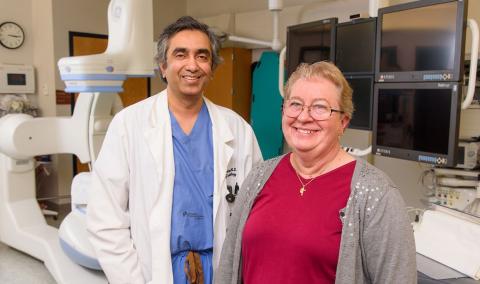Your heart is designed to keep a steady rhythm. When it skips, flutters or feels off beat, it may be a sign of an irregular heartbeat, called arrhythmia.
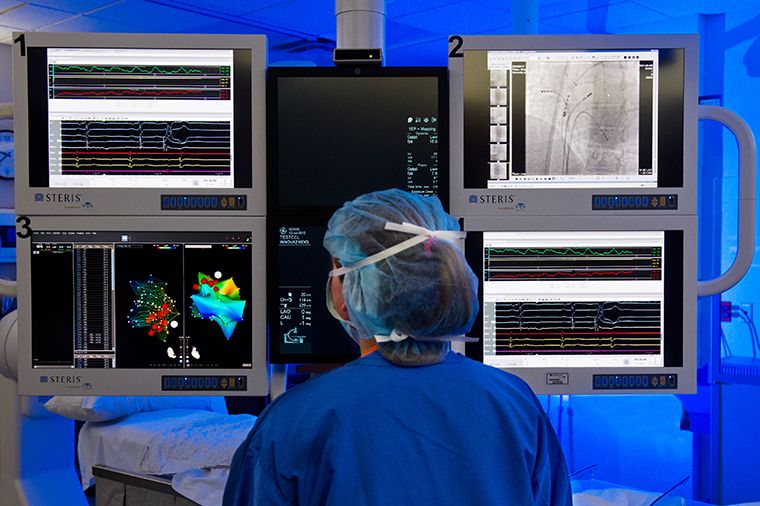
At MU Health Care, our heart experts diagnose and treat all types of arrhythmias. We work with you to create a personalized care plan tailored to your history, lifestyle and goals, offering the latest treatments to help restore and maintain your heart’s natural rhythm.
Types of Arrhythmias
MU Health Care cardiologists and electrophysiologists treat different types of arrhythmias, including:
- Atrial fibrillation (AFib)
- Ventricular tachycardia (VT)
- Supraventricular tachycardia (SVT)
Atrial Fibrillation (AFib)
Atrial fibrillation (AFib), the most common type of rhythm disorder, occurs when the electrical signals in your heart become irregular, causing the upper part of your heart (the atria) to quiver, or fibrillate.
When you have atrial fibrillation, your heart can’t properly pump blood. Blood can pool in your atria, leading to dangerous blood clots. These blood clots can move from the heart to the brain, where they can cause a stroke. AFib also weakens your heart muscle, leading to heart failure.
Conditions that strain your heart, like high blood pressure, coronary artery disease, a heart attack or heart valve disease, can cause atrial fibrillation.
Ventricular Tachycardia
People with tachycardia experience an abnormally fast, but still regular, heart rate of more than 100 beats per minute. Ventricular tachycardia (VT) begins in the ventricles, or lower chambers of the heart. When the heart beats too fast, it can’t pump the blood to the rest of your body.
VT is usually caused by another heart condition and is more common in adults 50 and older. If it’s not treated, VT may get worse and lead to an irregularly fast and uncoordinated heartbeat (ventricular fibrillation), a leading cause of sudden cardiac death.
Ventricular tachycardia episodes that are sustained for more than 30 seconds can be life-threatening, and you should call 911 if you experience:
- Lasting chest pain
- Difficulty breathing
- Fainting
Supraventricular Tachycardia
People with supraventricular tachycardia (SVT) experience random episodes of very fast heartbeats — 150-220 beats per minute without exercise — due to a problem with their heart’s electrical system. You may experience these palpitations for a minute or over several days, and some people, but not everyone, experiences symptoms like:
- Chest pain
- Feeling lightheaded, dizzy and fainting or nearly fainting
- Fatigue
- Shortness of breath
These symptoms are caused by bad electrical signals in the upper chambers of the heart, which causes them to beat more rapidly before they can fill with blood. SVT is the most common arrhythmia in infants and children, and is more common among women and pregnant women than men.
In general, SVT is not life-threatening unless you have another heart condition. If you experience heart flutters or palpitations, you should notify your primary care doctor or schedule an appointment with a cardiologist. Call 911 if you experience rapid heartbeat along with:
- Chest pain
- Dizziness
- Weakness or shortness of breath
Diagnosing Arrhythmia at MU Health Care
At MU Health Care, our cardiologists, cardiac electrophysiologists, heart surgeons and critical care doctors are prepared to diagnose and treat all arrhythmias, whether in an emergency setting or during a routine clinic visit. Our diagnostic tools include:
- Ambulatory and monitoring
- Cardiac MRI
- Echocardiogram (ECG)
- Electrocardiogram (EKG)
- Electrophysiology studies
- Genetic screening
We can also provide cardiac stress tests and other evaluations if your arrhythmia doesn’t occur while your heart is at rest.
Arrhythmia Treatment at MU Health Care
Our team offers a wide range of options to care for arrhythmias, including supervised antiarrhythmic medication to manage symptoms and personalized interventional procedures when appropriate.
Medications
Heart medications can lower your heart rate, control your heart’s electrical signals, lower your blood pressure and prevent clots, which lowers your risk of stroke. Many patients don’t need interventional procedures or surgery and can manage their arrhythmia with medication and regular heart checkups. At MU Health Care, our doctors offer:
- Antiarrhythmic drugs, which control electrical signals in your heart by regulating the sodium channel, slowing electrical signals in the heart.
- Beta blockers, which slow heart rate by regulating hormones like adrenaline.
- Blood thinners, which reduce clots and risk of stroke.
- Calcium channel blockers, which decrease heart rate and contractions by regulating the calcium channel.
At MU Health Care, our doctors also conduct research to develop new, effective medicines for heart rhythm conditions.
Ablation Procedures
An ablation is a minimally invasive procedure designed to prevent AFib and SVT by scarring or destroying the groups of heart cells that are creating fast or irregular heart rhythms. Your heart rhythm team will guide a catheter to your heart through a small incision, usually in the upper leg, and precisely destroy the unhealthy cells, preventing them from sending electrical signals.
At MU Health Care, ablations can be done in our specialized cardiac catheterization labs while patients are awake or slightly sedated, and most patients go home the same day or after an overnight stay for observation. Using CT and MRI scans before the procedure and echocardiography during the ablation means patients can receive precise care without using radioactive contrast dye. Our heart experts offer three types of ablation procedures, and will recommend an approach tailored to your health history and goals.
- Cryoablation. This procedure uses small amounts of extremely cold gas to freeze and destroy the targeted heart cells.
- Pulsed field ablation (PFA). MU Health Care is the region’s only health system to offer this newer treatment, which uses quick pulses of electrical energy to destroy defective tissue more quickly and precisely than other forms of ablation.
- Radiofrequency ablation. This procedure uses high heat to scar heart tissue and block abnormal electrical signals.
Left Atrial Appendage (LAA) Closure
If you have AFib and cannot start or need to stop taking blood thinners, MU Health Care is the only hospital in the region to offer a left atrial appendage (LAA) closure procedure. It’s a minimally invasive surgery that drastically reduces the chance of strokes for patients with nonvalvular AFib.
The left atrial appendage — a small pouch connected to the upper left chamber of the heart — is where 90% of clots form in AFib patients. During an LAA closure procedure, your cardiologist guides a catheter to the left atrial appendage and deposits an umbrella-shaped device to block the pouch. After six weeks, patients have a follow-up visit to make sure the heart’s lining has grown over the device, forming a solid barrier so clots can’t escape. At that point, patients who are on blood thinners can begin reducing their dosage and eventually stop taking blood thinners.
Pacemakers and Defibrillators
Based on your condition, our doctors may also suggest that you receive a pacemaker or implantable cardioverter-defibrillator (ICD) to keep your heart rhythm regular. These battery-powered devices are small, about the size of a pocket watch. Your surgeon uses a minimally invasive procedure to implant the devices into your chest and connect a tiny lead wire from the device to your heart.
At MU Health Care, we offer the latest pacemaker technology, an inch-long leadless pacemaker that is implanted directly into your heart. This pacemaker is not widely available and may function more efficiently than a pacemaker with a lead.
An ICD sends an electrical signal to your heart if it detects a dangerously irregular heartbeat, shocking your heart back into normal rhythm. These devices can prevent sudden cardiac death in people with heart rhythm disorders caused by birth defects of the heart such as hypertrophic cardiomyopathy.
Cardiac Device Monitoring
If you have a pacemaker or defibrillator, you will need to see your MU Health Care cardiologist regularly. During these appointments, your physician will check the device to ensure it’s working correctly and see if the battery needs to be replaced. Between appointments, you may also send information from your cardiac device to your physician via your phone or online HEALTHConnect portal.
Learn more about Heart & Vascular Care at MU Health Care.
Related Conditions & Treatments
- Aortic Disease Care
- Atrial Fibrillation (AFib) and Arrhythmia
- Carotid Artery Disease
- Chest Pain
- Chronic Total Occlusion (CTO)
- Congenital Heart Disease
- Coronary Artery Disease
- Cardiothoracic Surgery
- ECMO Heart and Lung Life Support
- Heart Attack
- Congestive Heart Failure
- Heart Valve Disease
- Pediatric Cardiology
- Pediatric Vascular Anomalies
- Peripheral Artery Disease (PAD)
- Structural Heart Program
- Transcatheter Aortic Valve Replacement (TAVR)
- Vascular Surgery
- Women's Heart Health





